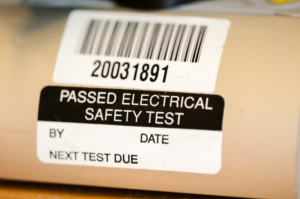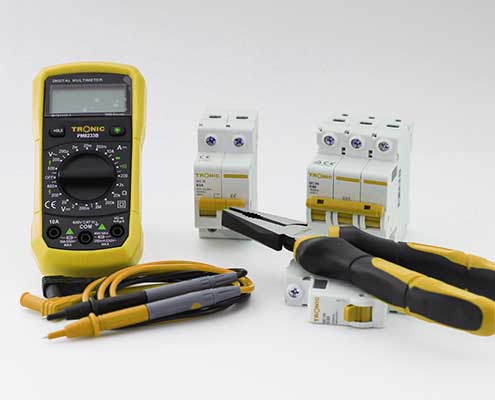What is a PAT Test?
______________________________________________________________
Understating a PAT Test
A PAT test, or portable appliance testing, is the term used to describe or explain the testing of electrical equipment. This electrical equipment testing is conducted in order to determine how safe the equipment is to use.
While this process is most often referred to as PAT testing, the official term is “in-service inspection & testing of electrical equipment”. While many defects in electrical equipment can be discovered simply by conducting a visual test, certain defects are only detectable when a PAT test is conducted. However, even during this process visual testing is an integral step although it is not the only step. Once the PAT test if completed, the equipment will receive either a ‘Pass’ or ‘Fail’ mark and these results will be recorded.
Time spans for testing electrical equipment can differ. Generally, it is sometimes suggested that every year your portable electrical devices are tested in a low-risk environment. In addition, laws generally mandate that employers ensure electrical equipment is properly maintained in order to avoid unsafe or hazardous conditions.
Specific PAT testing instruments are used in-depth testing of the electrical condition of the equipment. Earth’s continuity, Lead Polarity Insulation resistance, and more are all measured during the testing process.
As the name suggests, PAT testing is done for portable electrical devices which can include the following.
Seven types of electrical appliances:
- Stationary appliances
- IT appliances
- Cables and chargers
- Hand-Held appliances
- Fixed appliances
- Moveable appliances
- Portable appliances
While laws for PAT testing can vary depending on the country, in the UK there is no legal obligation to have PAT testing done. However, the law does require that electrical equipment is maintained and safe.
How do I know which portable appliances need PAT testing?
Technically, legislation does not define exactly what “portable devices” are. It is left up to interpretation, and generally the interpretation is that a portable device is any device with a plug that can be inserted into a common wall socket. Some equipment that might not be tested during a PAT test include High-risk machinery that requires inspection by an authorized electrician. While the word “portable” is in the name of PAT testing, this does not necessarily mean “moving.” Some fixed devices including stationary appliances, IT appliances, portable appliances, cables, chargers, and handheld devices can all be tested during PAT testing. The electrical ‘class’ and the ‘category’ of the item are generally two items that determine if the electrical equipment needs PAT testing.
What are electrical classes in PAT testing?
The electrical appliances class include Class 1, 2, and 3, with Class 1 being the most dangerous and Class 3 being the least dangerous. The class of the electrical equipment will determine if it needs PAT testing and how much testing needs to be done. For example, a Class 1 piece of electrical equipment will require a full PAT test. On the other hand, Class 2 devices require a PAT insulation test, and Class 3 devices do not require a PAT test.
Class 1 electrical equipment
A combination of basic installation and earth connectivity provides two layers of protection to the user for Class 1 appliances. Instruments, ground continuity, and insulation resistance tests are tested when conducting a PAT test for Class 1 appliances. It’s important to remember
- Class 1 appliances are made of metal. If it is made of metal, it’s Class 1
- Equipment with 3 basic cables are considered Class 1 appliances
- If the plug of the appliance has a metal fit, then it is also a Class 1 appliance
Class 2 electrical equipment
Two layers of insulation protect users with Class 2 devices. Therefore, Class 2 devices are double insulated and do not require an earth connection when PAT testing. For Class 2 appliances, a PAT test will just require an insulation resistance. Remember the following:
- Class 2 appliances are made of plastic
- If the rating plate has a double box symbol, it must be a Class 2 appliance
Class 3 electrical equipment
Class 3 appliances run on SELV (separately extra-low voltage). Essentially, the device cannot produce enough voltage to put the user at risk of electric shock. In addition, the power output of these objects is 50vac or 120vdc. Class 3 products do not require PAT testing. However, if the equipment has a Class 2 charging lead, it might require PAT testing.
When do I need to have a PAT test conducted?
Let’s think in terms of office equipment, since most people know office equipment. This can include items such as computers, printers, lamps, radios, and copiers.
When thinking about these commonly used items, we recommend you have a PAT test conducted every 2 years. Additional low-risk items are items that are not very mobile. As long a fixed devices were installed properly, they should be fine for a year or two.
However, certain situations have different recommendations. For example, in educational facilities there might be higher risk of office equipment that students use. Students might take less care of equipment, so it may need more frequent testing.
You must also think about things such as portable devices, like hand-held items at a café. Something like a living aid could require annual testing. Other high-risk equipment such as electrical tools in a factory will also need to be tested more frequently, around 12 months or less depending on the usage.
The regulations can be viewed in more detail on the HSE website here https://www.hse.gov.uk/electricity/faq-portable-appliance-testing.htm
What are the advantages of PAT?
The biggest advantage of PAT testing is saving lives! Indeed, another big benefit of PAT testing is keeping your equipment safe. This is the responsible think to ensure your office or workplace is healthy and safe.
Did you know that about 15% of home fires in the UK and Wales are caused by electrical faults? These faults include electrical equipment malfunctions and broken cables. Around 8,000 electrical fires are seen in the UK alone each year. Furthermore 4,000 injured and more than 30 deaths. Remember the following:
- Performing PAT testing regularly will significantly reduce the risk of electrical accidents. While you can never guarantee that accidents won’t happen, PAT testing greatly reduces the risks.
- In addition, regular PAT testing will make sure that you comply with certain health and safety laws in the UK. These laws include the Electricity Work Regulation (EAW) and the Health and Safety of Work Act.
- If you do not comply with legal requirements, your business could face lawsuits. Therefore, regular PAT testing not only protects you and your employees, but also can protect your business.
- Finally, the practice of detecting electrical equipment malfunctions in the workplace improves safety and performance of devices.
For additional electrical articles please visit our main BLOG page here














